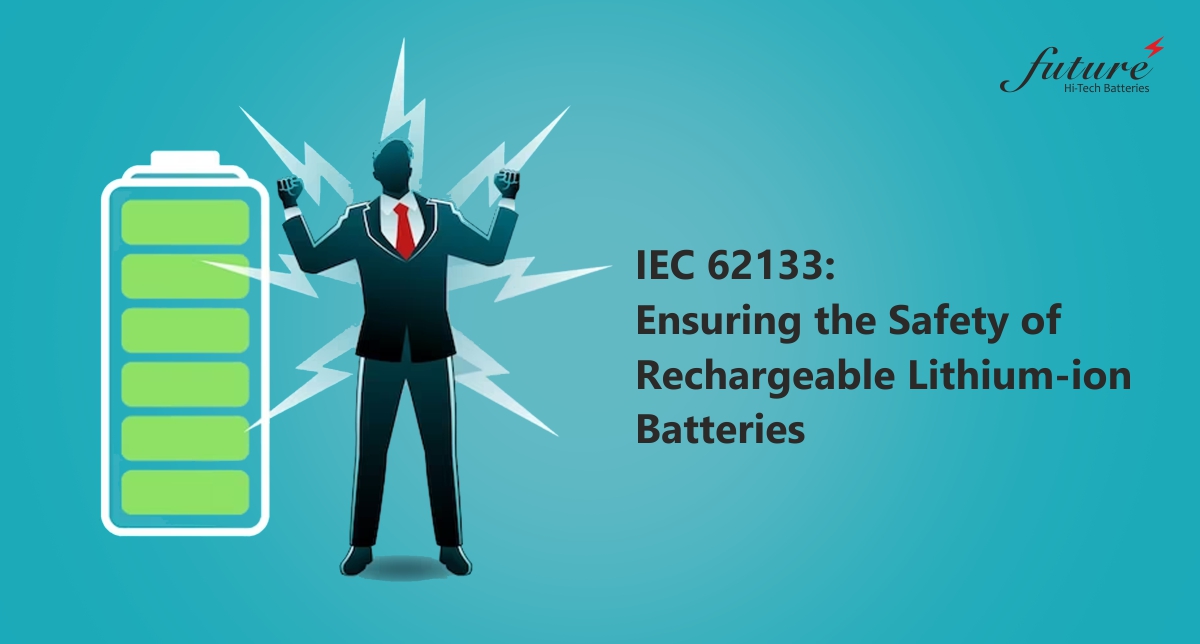In today’s tech-driven world, rechargeable lithium-ion batteries power an array of devices, from smartphones and laptops to electric vehicles and renewable energy storage systems. These batteries have revolutionized the way we live and work, offering high energy density and portability. However, with this power comes responsibility – ensuring the safety of these energy storage devices is paramount. This is where the International Electrotechnical Commission (IEC) standard 62133 plays a pivotal role.

Lorem ipsum dolor sit amet, nec in adipiscing purus luctus, urna pellentesque fringilla vel, non sed arcu integer, mauris ullamcorper ante ut non torquent.
Why is IEC 62133 Needed?
The need for safety standards like IEC 62133 arises from the inherent risks associated with lithium-ion batteries. These risks include thermal runaway, short circuits, and chemical reactions that can lead to fires or explosions if not properly managed. As the use of lithium-ion batteries continues to grow across various industries, such as consumer electronics, automotive, and renewable energy, the potential for safety incidents also increases. Hence, a standardized framework is essential to mitigate these risks effectively.
What is IEC 62133?
IEC 62133 is an internationally recognized safety standard specifically designed for rechargeable lithium-ion batteries. Its primary goal is to ensure the safety and reliability of these batteries throughout their life cycle – from manufacturing and transportation to usage and disposal.
How Does IEC 62133 Help?
a) Quality Assurance: The standard sets stringent requirements for the manufacturing process, including cell design, assembly, and materials. Manufacturers must adhere to these guidelines to produce batteries that meet safety and performance criteria.
b) Testing and Certification: IEC 62133 outlines rigorous testing procedures, such as mechanical, electrical, and thermal tests, to assess the battery’s resilience under various conditions. Batteries that pass these tests receive certification, indicating their compliance with safety standards.
c) Risk Mitigation: By addressing potential safety hazards and risks, the standard helps prevent accidents and incidents associated with lithium-ion batteries, protecting consumers and property.
d) Transportation Safety: IEC 62133 includes provisions for the safe transport of lithium-ion batteries, which is critical given the global supply chain and the need to ensure batteries reach their destinations without incidents.
c) Environmental Impact: The standard also promotes environmental responsibility by addressing aspects of battery disposal and recycling, reducing the impact of battery waste on the environment.
How Will IEC 62133 Benefit the Industry?
Enhanced Consumer Confidence: Compliance with IEC 62133 gives consumers confidence that the products they use are safe and reliable. This trust is vital for the adoption of lithium-ion batteries in various applications.
a) Interoperability: Standardization fosters interoperability, making it easier for manufacturers to design devices that can accommodate a variety of certified batteries. This flexibility benefits consumers, as they have more choices and can easily replace batteries when needed.
b) Market Access: Manufacturers who adhere to IEC 62133 can access global markets more easily, as many countries require compliance with international safety standards for battery-powered products.
c) Reduced Liability: Following a recognized safety standard can help manufacturers reduce legal liability in case of accidents or product malfunctions. It demonstrates a commitment to safety and due diligence.
d) Innovation and Research: The standard encourages innovation and research into safer battery technologies and manufacturing processes, driving continuous improvement in battery safety.
e) Sustainable Practices: By addressing environmental aspects, IEC 62133 promotes sustainable practices in battery manufacturing, usage, and disposal, aligning with global efforts to reduce electronic waste and environmental impact.
In conclusion, IEC 62133 plays a critical role in ensuring the safety and reliability of rechargeable lithium-ion batteries. With the growing ubiquity of these batteries in our daily lives, from personal electronics to electric vehicles and renewable energy systems, adhering to this international standard is paramount.
In essence, standards like IEC 62133 are indispensable in an era where lithium-ion batteries are the lifeblood of our interconnected world. They not only safeguard against potential safety hazards but also promote industry growth, sustainable practices, and consumer confidence, ultimately facilitating the safe and responsible integration of lithium-ion batteries into our daily lives. It enhances consumer confidence, promotes industry growth, and safeguards against potential safety hazards, ultimately making our world more connected and energy-efficient while prioritizing safety.










Your Comment Please